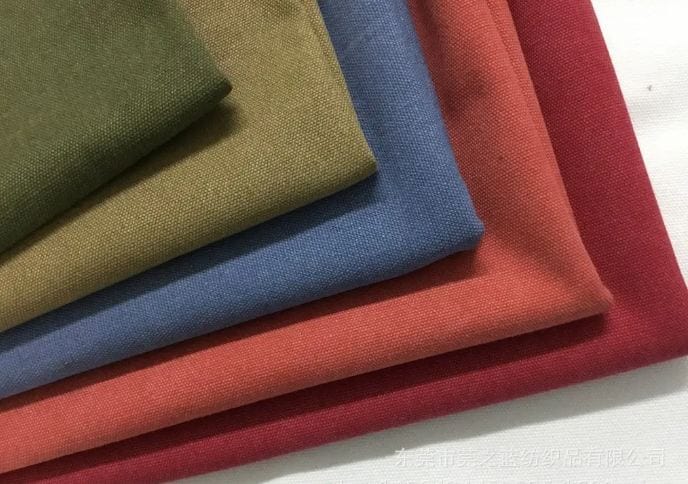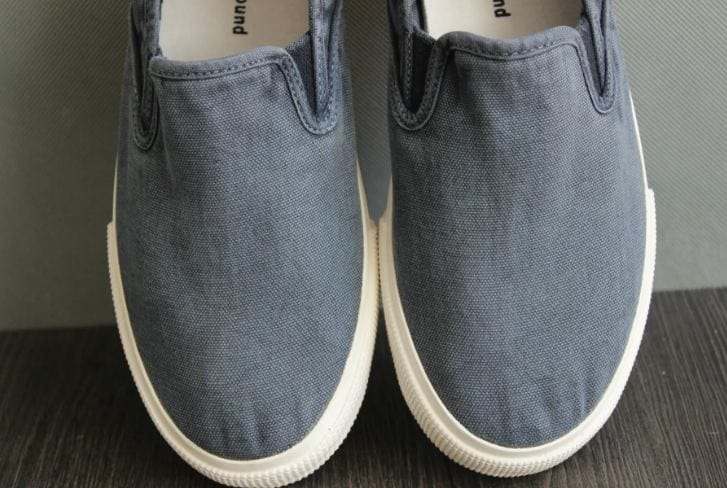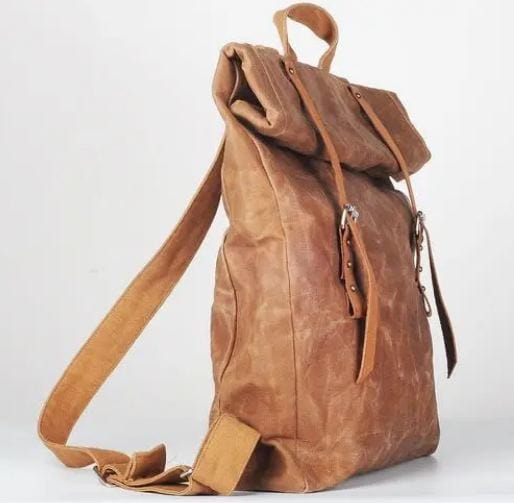Your cart is currently empty
What Is Canvas Material
What is canvas material? You might have heard about this fabric when oil paintings were mentioned. This popular fabric is called canvas, but it can also be used for other things. You will be surprised to know what canvas material is? So, read on to find out more.
What is canvas material made of?
The canvas material is a plain-woven fabric usually made of cotton or linen. How it is woven is a key part of what makes it so strong and long-lasting. Canvas can also be made from hemp, PVC, and other synthetic fibers, but these are rare.
Canvas has contributed to some of their most significant events. For example, the sailcloth was made of canvas, which led to many discoveries in the past by countries that were making progress. Well-known artists also used it to bring their many ideas to life through paintings. Canvas is also made into a fabric that can be worn. It can be used for shoes and bags because it is durable and can keep water out.

Is canvas better than cotton?
Yes, cotton is a fiber, while canvas is a type of fabric. Cotton is often used to make canvas, but it is not the only fiber that can be used to make fabric.
There are many ways to weave and knit cotton. For example, jersey fabric, made by machine knitting, is used to make a lot of plain cotton T-shirts. Cotton fibers can also be found in flannels and other woven fabrics that are not canvas.
Canvas is not always made of cotton, either. Canvas can also be made from linen, hemp, and synthetic fibers. For a fabric to be canvas, it needs to be stiff and have a plain weave. Cotton and linen canvases get softer, but they are still more inflexible than cotton sheets or a jersey knit t-shirt.
What fabric is like canvas?
Canvas is the same as duck fabric. A plain-weave fabric that is tightly woven and similar to canvas. It is usually made of cotton.
Is canvas a polyester fabric?
Canvas is a plain-woven fabric usually made of cotton and sometimes linen. Canvas is known for being strong, heavy-duty, and long-lasting. Canvas can be water-resistant or waterproof by mixing cotton with synthetic fibers. This makes it a great fabric for outdoor use.
What are the properties of canvas material?
Durability:
As was already said, cotton canvas is a very strong fabric. This is because a thick material is made from tightly woven cotton or linen with a plain weave. This fabric has the same thickness and durability as denim.
Low thread count:
Most canvas has a low number of threads per square inch. This means that when you cut it and look at the edge, fewer threads will stick out than with a fabric with a high thread count. Increasing the thread count of the canvas can also make it feel softer. But for this to happen, it has to give up its thickness and strength.
Resistant to water:
Canvas is also unique in that it is naturally resistant to water because it is thick. By adding a finishing coat, the canvas can be made even stronger. Because of these things, the canvas is a popular fabric for use outside.
How did the material for the canvas come to be?
Now that you know what canvas is, let's talk about how it has changed over time. Even though most canvas is made of cotton, the word "canvas" comes from "cannabis." This is because the canvas was first made from hemp, a plant related to marijuana and in the same family.
As the world went on and the age of imperialism and exploration peaked, trading was still the most common way to get money. Because of this, canvas became known in the most important countries at the time, especially in Europe.
Many people liked canvas because it was strong and easy to move around. During the Middle Ages and the Age of Reasoning, European artists started to paint with oil on canvas. This made it popular. This made sure that many masterpieces would last forever. This fabric is still useful, especially in the art world.
What does canvas material do?
Canvas is used in many different fields. It is a fabric that many people use every day. There are only so many clothes made of canvas, though. Most canvas clothes are outerwear or work coveralls, not pieces of fashion.
But the canvas is a very common material for shoes. Tennis shoes like Converse are often made of canvas with different colors and patterns. It is also used to make sandals and shoes that slip on. Because canvas softens over time, these shoes tend to fit the foot of the person who wears them. This makes them very comfortable.
Canvas is also often used to make totes, backpack and messenger bags. Canvas is used to make sandbags and reusable grocery bags, among other things. Canvas is great for carrying heavy or bulky items without adding to their weight because it is strong for how much it weighs.
Fine art is another place where the canvas is used a lot. It lasted longer than wood and was easier to paint in wet weather. Canvas is the most popular painting surface in the world right now.
How many different types of canvas are there?
There are types of canvas fabric, which is one reason it can be used for many other things. There are only small differences in how the canvas is woven and what types of canvas fabric are used.
Duck Canvas:
Duck canvas is often used to make clothes, shoes, and other things that need a smoother canvas. It has a higher thread count than other canvas fabrics and thinner threads. It comes in twelve weights set by the industry and can be used for different things.
Waste Canvas:
Waste canvas is a type of canvas that is only used for sewing and crafts. It is made to come apart easily, so the weave is much less tight. It gives a project temporary support or a grid. It can be used to embroider fabrics that need to be stronger. When the embroidery is done, you pull the threads out of the canvas like you would take down scaffolding when a building is done.
Embroidery Canvas:
Aida cloth is a type of fabric that is used as a canvas for embroidery. More warp threads than weft threads make small boxes in the weave of Aida cloth. There are different "counts" of this canvas, meaning how many packs per inch of fabric. The weave gets tighter as the count goes up. Aida is intended to be stiff so that the stitches in the embroidery will be even.
Waxed Canvas:
Waxed canvas is any canvas that has a thin layer of wax on it. Putting polish on one or both sides of the canvas fabric becomes waterproof. Because the weave is tight, manufacturers can wax one side without getting wax on the other side. Before weaving, the threads can also be covered in wax to get the same effect. This is common for bags or covers that keep things dry.

Canvas for Painting:
Canvas used for painting is another type of canvas that is often used. It can be bought on a roll or already on a frame. Depending on how much texture you want to show through the painting, there are different weights and thread counts. Some artists like a cotton duck for their canvases because it has a smoother surface.
How to Take Care of Canvas
How you take care of canvas depends on whether it has been treated. For example, waxed canvas can't go in the washer or dryer, or the wax will melt. Check the tags or care labels on the canvas before you wash it.
Use a gentle cycle with warm water and a mild detergent to wash canvas that hasn't been treated. Dry it on low heat in the dryer, or let it dry in the air if you don't want it to shrink. Cotton and linen can handle fairly high temperatures but tend to shrink.
Most treated canvas can't be dried in a machine and shouldn't be washed in one. Canvas waxed or treated to repel water is usually challenging to stain. Any dirt or trash should be easy to shake off. If it doesn't come off, use a damp cloth to wipe down the canvas.
The more you wash canvas clothes, the faster they will get softer. If you don't want your canvas items to lose their shape, you can iron and starch them after you wash them. This will help them stay as strong as they were before.

Does Canvas let air in?
Canvas doesn't breathe as well as other cotton or linen fabrics. The material won't be able to live as well if the weave is tighter. Most canvases are made to be strong and as close to waterproof as possible so it doesn't let much air through.
But canvas made with natural fibers like cotton or linen will breathe better than canvas made with PVC or synthetics. Linen and cotton fibers can easily soak up water and dry quickly, which makes the fabric feel like it can breathe. It's harder for the thread to do this when there's less air in a weave, but it's possible.
Like waxed canvas, treated canvas doesn't let air through. The coatings that make it water- and weather-resistant also make it impossible to breathe. But manufacturers don't want it to live for most uses of the canvas, so this is strength, not a weakness.
How do they make canvas?
It would help if you now had a better idea of what canvas is and what kinds there are. To help you understand these differences, here are the general steps for making canvas.
Materials preparation:
Hemp, cotton, and sometimes PVC are now used to make the base of the canvas. Artificial canvas versions are cheaper in the art world, and they have gotten the reputation of being better for using acrylic paint.
How to make yarn:
Once one of the base materials is chosen, the yarn can be made. Most of the time, the thread is carded instead of combed as the process goes on. This is done because softness doesn't matter when it comes to canvas, which is all about being strong.
Weaving:
Now that the yarns have been made, they will be woven together. The spacing and patterns can be different depending on the use, but most canvas fabrics are made with two-ply yarn. For art, a single strand of yarn is enough.
Finishing:
After all those yarns are woven together, a finishing layer may or may not be on top. If the canvas is used in an industrial setting, a PVC layer will be put on the outside. First, the canvas will be bleached, and then a layer of gesso will be placed on it for painting and textiles.
Which are the advantages and disadvantages of canvas?
Canvas is one of the most commonly used materials because of its good qualities. But some things can go wrong when you use canvas. Here are the positive and negative aspects of using canvas to help you decide:
Advantages:
- Able to be printed out easily
- Water-resistant.
- Very good at removing moisture.
- Not prone to pilling.
- It can be given chemical treatments to make it better. It can be treated to make it less likely to catch fire, resist mildew, and require less upkeep.
Disadvantages:
- The chemicals used to treat the water could be better for the environment.
- Low ability to breathe.
- Canvas has little drape, so it can't be used for most types of clothing.
How to clean canvas?
Now that you know what canvas is, how it is made and used, and how it affects the environment, you can learn how to take care of it. To make things easier, they will focus on how to take care of canvas shoes and furniture.
Cleaning canvas shoes:
- Take off shoelaces all the way.
- Use a soft brush to get rid of the dirt on the surface.
- Mix some water and mild detergent to make a cleaning solution.
- Give the laces about 15 minutes to soak.
- While the laces are washing, use a brush dipped in the soapy mixture to scrub the shoe's surface.
- Rinse the shoe after you've cleaned all of it. It's important to keep any liquids out of the interior.
- After soaking the laces, clean them with a brush as you rinse them.
- Let the shoes and laces dry in the air or sun.
Furniture made of canvas:
- Hand-brush away any dirt on the surface. You can wipe it off or hit the surface hard to get rid of the land.
- As you take off the canvas cover, you can machine-wash the furniture if it says so on the label. But you can rinse your hands if you desire to be safe.
- Make a mixture to clean in a bucket. Put 2 gallons of water and about half a capful of any mild detergent. Mix well until bubbles appear.
- Soak a sponge or rag in the solution, and then use it to clean the surface of the canvas. You can also use a soft-bristled brush to get rid of tough dirt.
- Spray some clean water on the canvas to clean it.
- Let the freshly cleaned canvas dry on its own. Please do not put it in direct sunlight, or it will change color.
- Use a fabric protectant on the canvas to keep it from getting any worse. Don't forget to carry out the instructions given.
What are the qualities of canvas?
Plain weave for canvas is a tight weave, which makes the fabric stiff, strong, and resistant to water. The texture of coarser canvas fabrics with thicker threads is rough, but as the thread count increases, the surface of canvas fabrics gets smoother.
Even though it is strong, the canvas is a light fabric. It comes in different weights, but based on its strength, it is considered a soft fabric. This means that you can easily use big pieces of canvas. For instance, it is a great material for making sails for ships. Large boats need big pieces of fabric that won't make the boat heavier.

Especially if it is made of cotton or linen, the canvas can lose its stiffness over time. Over time, natural fibers will get softer from being washed and worn. You can stop this from happening by using starches or other treatments, but sometimes the gradual softening is a good thing, not a bad thing.
Canvas is mostly a neutral color. It is easy to dye, but it is only treated for a few things other than clothes. Most canvas fabric is naturally an off-white or ecru color. For clothes, though, they can come in a lot of different colors and patterns.
Conclusion
Canvas is a fabric used for a long time because it is durable and useful. There are benefits and drawbacks to using it. They hope this has helped you understand what canvas material is and how it can be used differently.
Shop our collection of:
Canvas Backpacks | Canvas Messenger Bags | Canvas Handbags | Canvas Tote Bags | Canvas Briefcases | Canvas Gym Bags | Canvas Laptop Bags
Related Blog Posts:




